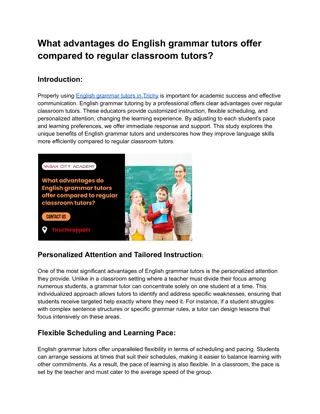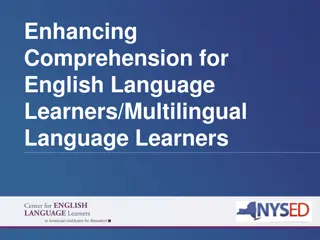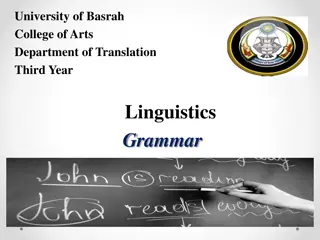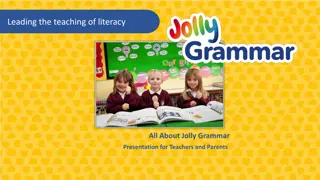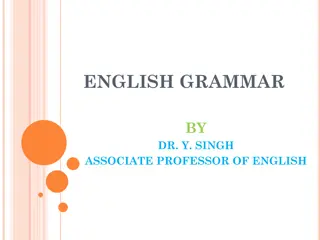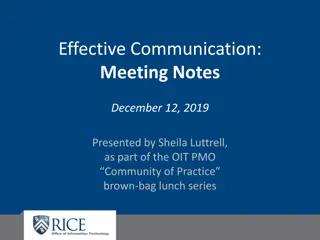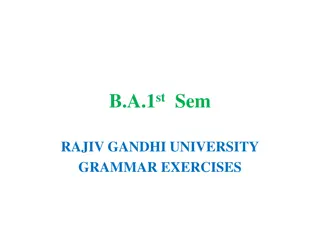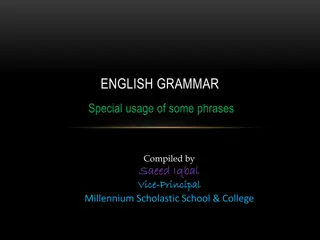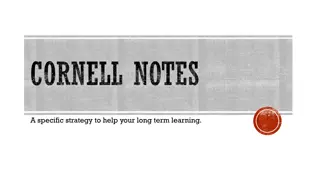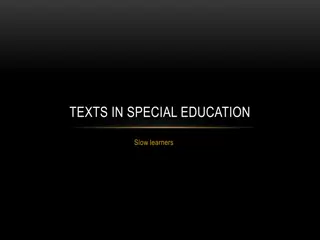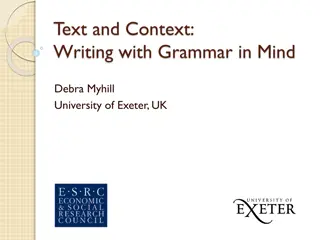Important Grammar Notes for English Learners
Learn about the Past Continuous and Past Perfect tenses, passive voice, usage of "for + -ing", and the difference between -ED and -ING adjectives in English grammar. Understand how to form sentences correctly and use adjectives to describe people, things, and situations effectively.
Download Presentation

Please find below an Image/Link to download the presentation.
The content on the website is provided AS IS for your information and personal use only. It may not be sold, licensed, or shared on other websites without obtaining consent from the author.If you encounter any issues during the download, it is possible that the publisher has removed the file from their server.
You are allowed to download the files provided on this website for personal or commercial use, subject to the condition that they are used lawfully. All files are the property of their respective owners.
The content on the website is provided AS IS for your information and personal use only. It may not be sold, licensed, or shared on other websites without obtaining consent from the author.
E N D
Presentation Transcript
Important Grammar Notes Taken from the story: GOING FOR A HOLIDAY UNIT 6 P. 53
2. The Past Continuous, Passive Voice His flight was already being called over the loudspeakers. S + (be: was or were) + being + past participle
This tense is confusing because the verb "be" appears twice. This example uses the verb "teach" as the main verb: teach / taught / taught Plural Singular I was being taught We were being taught You were being taught You were being taught He was being taught She was being taught They were being taught It was being taught
3. The Past Perfect Tense indicates that an action was completed (finished or "perfected") at some point in the past before something else happened. This tense is formed with the past tense form of "to have" Had + past participle of the verb (which can be either regular or irregular in form): Examples: -I had walked two miles by lunchtime. -I had run three other marathons before entering the Boston Marathon - He had cancelled his ticket for a morning flight and had booked an afternoon flight instead
4. For + -ing For + -ing function We use for + the -ing form of a verb to talk about the function of something or how something is used: I need something for storing CDs. For + -ing: reason We use for + the -ing form of a verb to refer to the reason for something: -You should talk to Jane about it. You know, she s famous for being a good listener. (A lot of people know she s such a good listener.) -Wilson apologized for being late.
5. There are many adjectives that we have in English that end in -ED or -ING. An adjective that ends in -ING is used to describe: the characteristic of a person, a thing or a situation. An adjective that ends in -ED is used to describe: a feeling (or how a person feels) or an emotion. It is used to describe a temporary thing. Since only people (and some animals) have feelings, -ed adjectives cannot be used to describe an object or situation.
Compare the difference: Wilson is bored. - ( Wilson feels bored) Wilson is boring. - ( Wilson is a boring person) You can use these adjectives to describe people or situations but be careful that you are using the correct adjective. For example, there is a big difference in meaning between: I am confused. - (I don't understand something) I am confusing. - (I will cause you to be confused)




